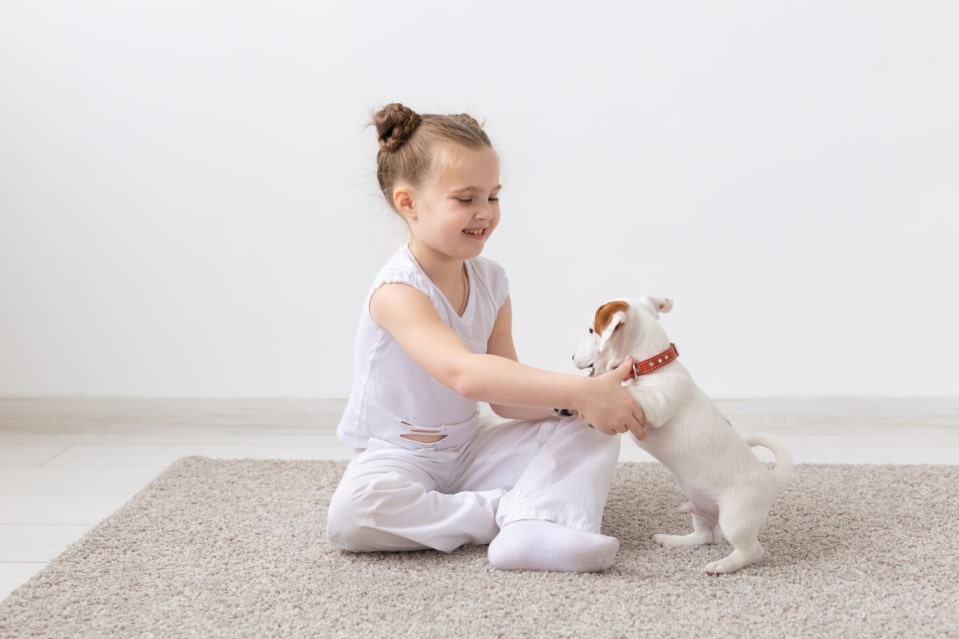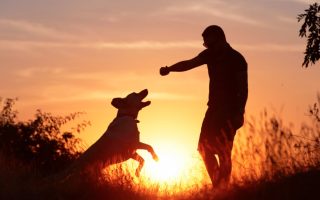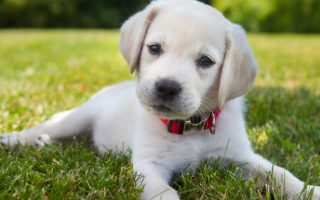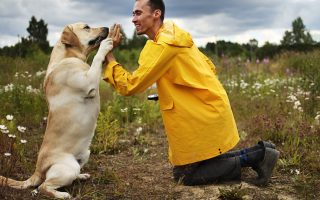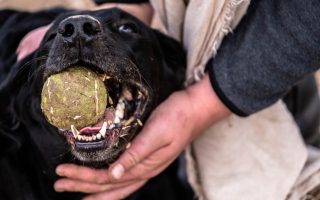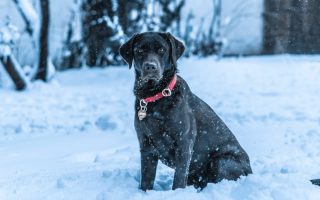They are loving, friendly, and easy to handle. When it comes to your lab puppy, this is the place for you. Bringing an adorable pooch into your family is not only a source of joy and happiness but also a set of responsibilities. There’s a lot to cover, from naps to poop training and from nipping to cute little howlings, to train lab puppy. These are some of the most adorable creatures and instantly grab the attention of anyone they meet.
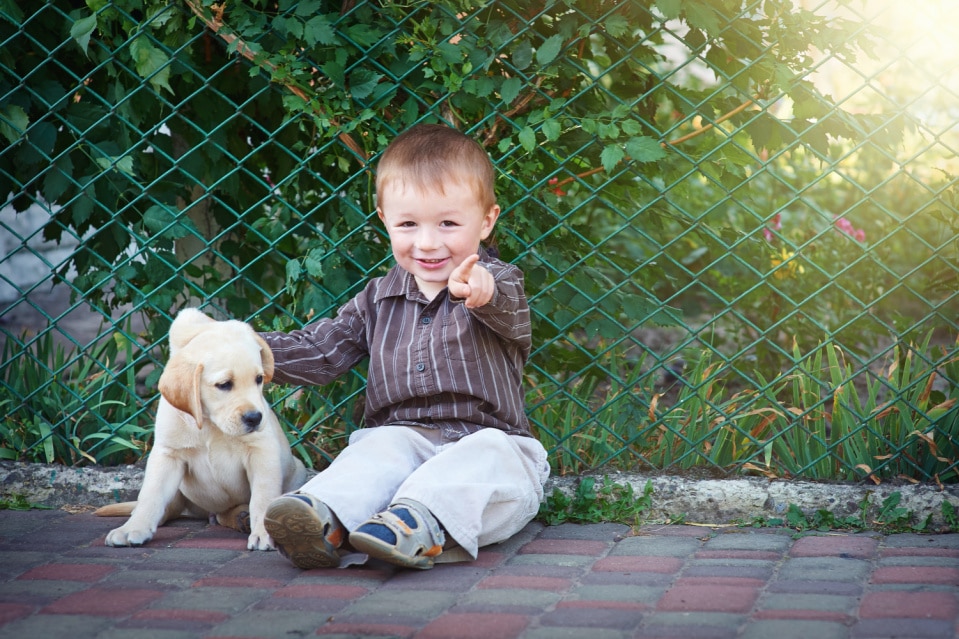
As with any significant commitment, knowing as much as you can in advance is better. Puppies aren’t easy to handle. Handling them is just like handling a human baby. Adequate obedience and socialization are key to a happy, healthy dog. It is imperative to begin training a lab puppy from an early age.
The entire training process revolves around patience, discipline, and positive encouragement. It is extremely important to teach your pooch good habits as well as build a strong relationship.
Best Age To Start Training A Lab Puppy
According to experts, lab puppies should be trained as early as 8 weeks of age. Once your dog reaches adulthood, you will regret not training him earlier. The puppy can be trained the moment it is able to see and start to walk properly. Although puppies tend to be a bit temperamental, they are still capable of learning basic instructions like sitting, staying, and lying down.
List Of Things Needed To Train A Lab Puppy
The list may seem lengthy, but in reality, it isn’t. The following items are recommended to train a lab puppy.
- Comfy collar with a short leash – the leash isn’t needed all the time
- The pouch filled with treats – can be used as a reward while training
- A good mat – ensures effortless training
Why Training Is Essential
The importance of training a dog cannot be emphasized enough as it promotes positive self-esteem, stimulates the mind, and strengthens your bond with your pet.
Ideally, for your pup to be on the same page as you, he needs to be aware of your expectations. In this way, he will have the confidence to accomplish the tasks outlined for him.
Sometimes, they nibble and bark nonstop. Though they have to live under the same roof so make sure they act nicely or else you’ll face a lot of problems. In the course of training, try not to get discouraged if you encounter failures.
You might find puppy training intimidating at first, particularly the first time you get one. The longer you practice good handling with your puppy, such as letting them out right away and rewarding them, the more they will get used to it.
A Puppy’s Name: The Best Way To Teach It
The first thing you should do is to train your lab puppy his name. Name him something cute. Everyone calls him that and he’ll get used to it soon enough. I agree with you to a certain extent, but there is still room for more.
- Start using the name even if you feel your pup doesn’t listen to you
- Repeat their name continuously during the training course to make sure they can recognize it when they hear it.
- Use a clicker while calling out your puppy’s name.
- Give your puppy a reward for obediently responding to your commands.
- Follow the 4 steps outlined above regularly for approximately 3-5 minutes per session.
- Play the name game with a challenge – Take your pooch to new places and test him by calling out his name. Patience is the key here because your pooch might need a little time to get used to it in different environments.
Sit And Stay – Teach Basic Skills
Imagine yourself at the dog park, having a conversation with your favourite buddy as your pup sits peacefully by your side. Wouldn’t that be amazing? The command to sit is one that you shouldn’t disregard in favour of other commands such as rolling roll or playing dead.
Unlike other dogs, labradors are smart learners. You can easily teach them basic commands like sitting, staying. Let’s start with the sitting command before others.
Things to Remember
Whenever you train your lab puppy, make sure that you have their complete attention throughout the process. Halt immediately if they lose interest. You will be fighting a losing battle if you attempt to begin training your pup when they over-stimulated and distracted.
- Get started with playing – Your puppy is energetic and loves playtime, so playing will encourage him or her to listen to your commands. Treats are a great way to keep him engaged during playtime.
- Your puppy will be more focused if you hold his favorite treats in front of his nose. Engage him by holding the treat still. Now that you have your puppy’s attention and he’s ready to do anything for the treat, go for it.
- Simply wave the hand holding the treats around his nose, and his nose will follow along.
- Keep holding the treat close to his nose and allow him to follow the treat upright. Eventually, the treat will lead him backward.
- When your pooch follows the treat with his head, his chin will probably pointed up and at that time he won’t accept the possibility of tumbling, which will prompt him to sit on his back.
- The moment your puppy sits in an enthusiastic attempt to keep up with the treat whizzing past him, it is the perfect time to say the magical word “Sit” and reward him.
- Repetition is necessary until your pooch does not require a treat to sit, but rather simply obeys the command.
- Don’t forget to give him treats for good behavior and sit on your “sit” command when you ask him to.
- It is a good idea to do this every day or several times each day. No matter how difficult your training is, it is imperative that your lab puppy sits on command before anything else.
Stay Command
The stay command is incredibly useful when working with pups, as it can use in a variety of situations. For instance, you can instruct your pup to stay while you talk to someone else or ask him to stay outdoors for a while after a mud puddle while you grab a brush or a towel to dry him up.
Remember – Even if your pup is proficient at the stay command, never ever leave him unattended in the public.
Here’s how you can do it like a pro.
- Find a quiet spot or a sport that your pup is familiar with.
- Before teaching your pooch something new, command him something he/she is familiar with already. In our case, start with a sit command and praise him for it.
- Give your pooch a command by saying “Stay” while holding up your hand as a signal.
- Let go of your hand signal and give your pup a treat before he begins to move.
- Speed up. Repeat it 5 times in succession while giving your pup delicious treats.
- Simply repeat the process, avoiding eye contact this time. Praise him again.
- Gradually increase the time to stay before giving him a reward.
- Start to increase the gap between you and your pup. Make sure they stay at their position while you increase the gap. Once he obeys, reward him.
- Repeat until you feel comfortable moving around your pup while he or she is in a staying position.
Crate And Potty Train Your Pup
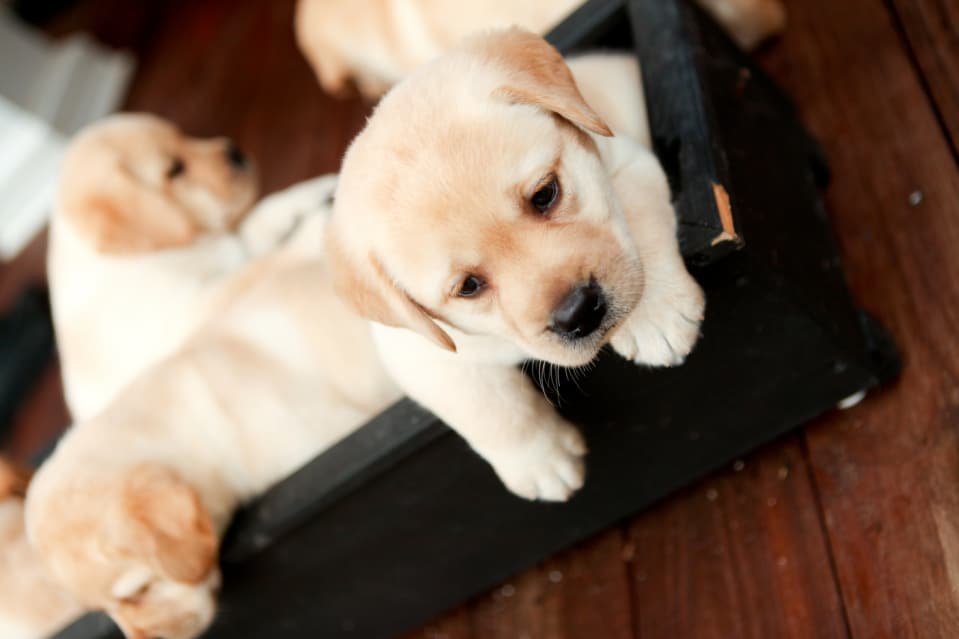
When it comes to puppy parents, training the puppy to go potty is their main concern during the first couple of weeks. To potty train a lab puppy, make sure you define a potty spot prior to starting. Taking your pup to his potty spot often through the course of the day or night is critical to potty training success. But before you potty train your pup keep in mind these things:
- Please be patient.
- Keep an eye on them if they haven’t pooped lately.
- Do not allow puppies to play on carpets and limit their access to washable surfaces.
- Punishing accidents is not a good idea. Rather, tackle them as soon as they occur.
- Stay with them until they’ve done their business (poop or pee).
Watch out for the cues and signs your pooch will give you when he needs to poop. Take your pup outdoors right away as soon as you sense the signals from him.
What to know before training Lab puppy
Sometimes, you will also let your puppy out before he has a chance to give signs that he needs to poop. Like when he wakes up in the morning or right after eating. Because pups are most likely to poop after these 2 events. So let’s take a look at what we can do to train him.
- Door method – Foster a habit of going to the door that your pup will look forward to whenever he feels like going potty. Look out for signs like knocking, scratching on the door, or maybe little woofs standing in front of the door. Before letting him out, take a moment and then open the door for him.
- Time for action – If your puppy needs to go outside, lead him to the door so he can go outside by himself. The perfect time for this is post-nap or post-wakeup, as well as overnight potty breaks.
- The hourly formula – Based on his age, he is capable of holding it steady for an hour per month. However, before he reaches that hour, make sure he gets to the door.
- Practice makes perfect – Practice the procedure over and over every time you get the signs from your pup and lead him outside.
- Wanted Treats – Give him a reward every time he obeys your command which will also encourage him to respond positively.
FAQs
How easy is it to train lab puppies?
Without a doubt, labs are among the smartest creatures on earth which makes them easy to train. Their hyperactivity and love make them easy to handle.
What is the best time to begin training my Labrador puppy?
Puppies should be trained at an early age – from 8 weeks of age.
Why is my puppy so nippy?
Puppy teething is a cause of biting, although they also bite when playing. They tend to begin biting in earnest around the first month of life.

